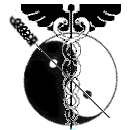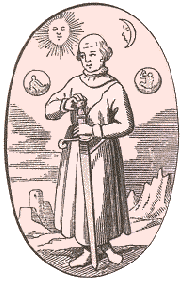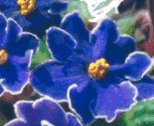Alternative therapies such as acupuncture, homeopathy, herbal and flower remedies frequently are chosen over traditional Western medicine. Today, Americans make an estimated 425 million annual visits to providers of alternative medical therapy versus 338 million visits to U.S. primary-care physicians. This change in attitude is prevalent in the care of pets too, including parrots. People seem to be aware now, more than ever before, of the need to assume responsibility for their own health and that of their pets. Gone are the days when allopathic physicians and traditional care veterinarians were our only choice in health care for ourselves and our pets.
It is estimated that two-thirds of all Americans will consult some form of “alternative practitioner” every year. Often holistic or alternative medicine is sought as a last resort, when there is nothing that conventional medicine can do. In these cases it may well be that alternative medicine will have something to offer. For example, acupuncture has helped many animals that were paralyzed or in severe pain and discomfort from arthritis. Homeopathy can offer an alternative treatment for chronic skin disorders that are conventionally treated with cortisone, which has many long-term side effects. However, when animals are treated holistically and naturally before this stage develops, long term benefits can result. These include excellent vitality, healthier immune systems and increased resistance to disease. Indeed, holistic or complementary medicine can prevent many diseases from developing. Healing of diseases often will be faster due to the enhanced immune system of the animal.
 ACUPUNCTURE in animals has been used to treat large animals for thousands of years by the Chinese. It is often used in the treatment of race horses in the U.S. Many racetracks have veterinarians who regularly perform acupuncture on horses.
ACUPUNCTURE in animals has been used to treat large animals for thousands of years by the Chinese. It is often used in the treatment of race horses in the U.S. Many racetracks have veterinarians who regularly perform acupuncture on horses.
Acupuncture for parrots is a relatively new mode of treatment. According to the Chinese, when an animal is healthy, there is a circulation of energy, life force, or “Qi” (pronounced “Chee”) along well-defined channels on the skin called meridians. The meridians are connected with internal organs, muscular and joint structures, and the nervous system. Acupuncture points lie on the meridians or areas of the skin (which can be shown to exist with modern electronic equipment) at which the flow of Qi can be influenced. In disease states, there is an imbalance of, or interference with, the flow of energy. The acupuncturist can manipulate the energy flow by stimulating the acupuncture points, thus rectifying the disorder.
Dr. Dave McCluggage of Colorado treats with acupuncture almost every parrot that is brought to his holistic treatment-oriented health center . He says that although some people have preconceived ideas about acupuncture being used only to treat arthritis or pain, it actually can be effective in any disease. It strengthens the body so that it can effectively fight off the disease process. It can be used as part of the treatment for problems ranging from bacterial infections to egg binding in parrots.
According to Chinese medicine, adverse emotions negatively impact internal energetic channels of the body. People use expressions such as “venting my spleen,” “turns my stomach,” “breaks my heart,” all terms that relate to emotions that adversely affect the Chinese meridian organ system. Chinese medicine looks at the entire pattern of how an organ works throughout the body. Anger and holding things inside adversely affect the liver. Many birds have a lot of frustration and anger at the things that are going on around them. The effect on their liver is what the Chinese refer to as stagnated liver “Qi” (pronounced “Chee”). When the liver is stagnated, it does not send energy, or “Qi” to the other organs of the body. Other organs may then start to become adversely affected. Ultimately, the emotions flare up even more powerfully and negatively. Our human society is afflicted with stagnated liver Qi, too. We all tend to not handle things well and to overreact to things. We react with headaches, digestive problems, skin tingling and other physical symptoms. People also react with compulsive behaviors, such as overeating or drug abuse, to try to escape the negative feelings. Birds sometimes get into compulsive preening behavior. Dr. McCluggage believes that acupuncture is a great treatment for that and for other behavior abnormalities.
From a more Western viewpoint, specific acupuncture point stimulation has been shown to increase oxygenation, increase blood supply to treated areas, aid in the production of anti-inflammatory secretions, release pain killers called endorphins, and increase immunity by increasing the production of white blood cells and antibodies.
Some parrots exhibit reactions to the acupuncture treatments for one or two days afterwards. They may become lethargic or hyperactive due to the sudden change in the energy flow within their bodies. Neither of these reactions should be considered cause for alarm.
For some conditions, a single acupuncture treatment is all that is required, but this usually is not the case. More frequently, multiple treatments spread over several weeks or even months are necessary to reverse some chronic conditions. The traditional Chinese approach stipulates six treatments before there may be any improvement. Normally, treatments are repeated weekly, but occasionally they are required twice weekly or every other week, depending upon the animal’s condition.
 HOMEOPATHY and its practice is based upon a hypothesis that diseases can be cured using extremely diluted remedies that produce the same symptoms as the disease. It is thought that by using these small quantities of agents that provoke the symptoms of a disease, the body’s own immune system is stimulated to fight the disease, much like the mechanism of vaccination. Homeopathy actually stimulates the body to heal itself and strengthens the immune system. Consequently, it leaves the body in a better state of health than before it became sick. It can treat many conditions effectively. Homeopathic remedies are made from plant, animal, and mineral extracts, ranging from toxic substances such as snake venom and Mercury to common foods such as oats and onions.
HOMEOPATHY and its practice is based upon a hypothesis that diseases can be cured using extremely diluted remedies that produce the same symptoms as the disease. It is thought that by using these small quantities of agents that provoke the symptoms of a disease, the body’s own immune system is stimulated to fight the disease, much like the mechanism of vaccination. Homeopathy actually stimulates the body to heal itself and strengthens the immune system. Consequently, it leaves the body in a better state of health than before it became sick. It can treat many conditions effectively. Homeopathic remedies are made from plant, animal, and mineral extracts, ranging from toxic substances such as snake venom and Mercury to common foods such as oats and onions.
Dr. Joel Murphy of Florida, author of “The Parrot Care Handbook”, primarily uses homeopathy in cases of psychological feather plucking. Based on trial and error, he has developed a protocol for treating birds based on human homeopathic recommendations in the literature. Because homeopathic remedies have no side effects and are completely safe, doctors are willing to try them before more potentially dangerous forms of treatment.
Dr. Murphy, writing in the AAV Journal, explains that clinical protocol for a feather picking case begins with a complete physical examination. If all results are normal, by default he concludes that it probably has a psychological cause. He will first correct the diet, then suggest getting the bird out of the cage for exercise, and a spray bath or shower three or four times a day. In a large number of cases, these practices alone seem to work. If not, he treats with homeopathy.
Homeopathic remedies and dosages have not been established for use in birds. Often five or six remedies, used one at a time for a month will be tried before the right one is found. Some birds do not respond at all. Normally with African Greys, he starts With Belladonna (30c). Nat mur is another homeopathic remedy that sometimes works in African Greys. Nux vomica is yet another. With feather-picking Cockatoos, he gets good results with Arnica 200c once a week for 4 weeks. Nat mur is also used in Cockatoos, especially those that are strongly bonded to their owners and go through separation anxiety.
Based on his studies with placebos as controls, Dr. Murphy has a success rate of about eighty percent in African Greys and sixty percent in Cockatoos with this protocol. He has not found a homeopathic formula that works consistently with Macaws. However, he is getting good results in treating the mutilation syndrome in Quaker parrots with homeopathy.

Each of the thirty-eight remedies treats a particular emotional state. For example, an essence called Holly is helpful for treating a parrot that tends to fight with other birds or is aggressive toward people. There are essences that help them to overcome fear or anxiety, to adjust to new circumstances such as moving to a new home, and to accept a new addition to the family. The most well known and useful essence is Rescue Remedy which is a combination of five of the Bach Flower Remedies.
Although flower remedies can help a lot with behavioral problems, such as biting and aggression, it is important to combine the remedies with training and behavior modification. Fear, a common problem in animals, also can be helped by suitable remedies. A combination of Rescue Remedy and the homeopathic remedy Aconite often will help in situations that involve fear, general lack of confidence, and any kind of stress. Parrots that have been rescued or abused often benefit from the use of appropriate flower essences, which can help to restore their confidence and trust in their caretakers and in the world around them.
To misquote Paracelsus, one of the most enlightened medical masters in Western history, “The parrot body is vapor materialized by sunshine, mixed with the life force of the stars.” This is perhaps an esoteric way of saying that our birds are more than just a collection of feathers and body tissue. Eastern mystics discovered many millennia ago that matter is nothing more nor less than condensed, highly organized energy, but Western medicine has failed to translate this to health care. We are just beginning to acknowledge that alternative healing methods have a place in the treatment of human and animal problems. After all, what really counts is how well it works, not how well it accords with our preconceived ideas of medicine.

